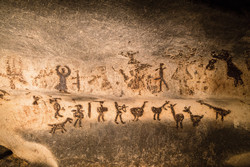A deeper look into the daily life of Neolithic communities
With EU funding support, the project CRAFTS(opens in new window) (Crafting networks in early farming societies: Tracing the residues of Neolithic activities through the study of stone artefacts) studied three archaeological sites to research the day-to-day dealings of Neolithic communities. The work has resulted in a greater understanding of the technological acts, cross-craft interactions and contexts of social interaction in Neolithic communities. The case study sites were Çatalhöyük in central Anatolia in Turkey, Knossos on the Greek island of Crete and Makriyalos in northern Greece. Chosen for their recognised importance for the Neolithic of Europe, the sites vary with regard to chronology, structuring conditions, environmental trajectories and social contexts. Researchers integrated scientific analysis with a broader theoretical framework. Microwear analysis, combined with residue and analysis, was applied to ground stone objects, followed by data analysis. Experimental studies focused on the production of bone tools and shell ornaments using ground stone tools. Stone assemblages from all three archaeological sites point to a wide range of activities, from the processing of plants to the production of stone axes, ceramic vessels, shell ornaments and bone tools. The research shows that ground stone tools played an important role in the functioning of the subsistence economy and were also instrumental for different craft activities. Findings were considered in relation to the large corpus of bioarchaeological and artefactual data generated by multidisciplinary research at the sites. The microscale approach helped to establish the nature, range and social context of craft and food-processing activities at these sites. CRAFTS highlighted how everyday activities became powerful mechanisms of communication, with the practice of different crafts contributing to the socialisation of Neolithic communities. As such, the work has offered a more comprehensive view of the organisation of daily life in different early farming societies. Overall, it affords new insights into how changing strategies and technologies of production constrain and shape social relations.







